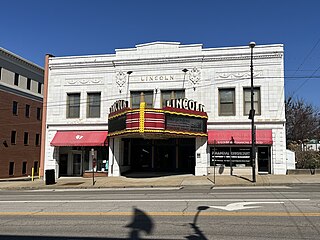
Massillon is a city in Stark County, Ohio, United States, approximately 8 miles (13 km) west of Canton, 20 miles (32 km) south of Akron, and 50 miles (80 km) south of Cleveland. The population was 32,146 at the 2020 census. Massillon is the second largest city within the Canton–Massillon metropolitan area, which includes all of Stark and Carroll counties and had a population of 401,574 in 2020.

The Ohio and Erie Canal was a canal constructed during the 1820s and early 1830s in Ohio. It connected Akron with the Cuyahoga River near its outlet on Lake Erie in Cleveland, and a few years later, with the Ohio River near Portsmouth. It also had connections to other canal systems in Pennsylvania.
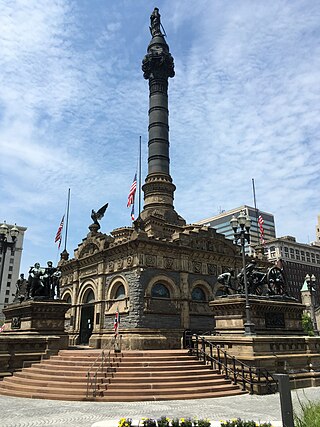
The Cuyahoga County Soldiers' and Sailors' Monument is a major Civil War monument in Cleveland, Ohio, honoring the more than 9,000 individuals from Cuyahoga County who served the Union throughout the war. It was dedicated on July 4, 1894, and is located on the southeast quadrant of Public Square in Downtown Cleveland. It was designed by architect and Civil War veteran Levi Scofield, who also created the monument's sculptures. The monument is regularly open to the public, free of charge.
The Cleveland, Columbus and Cincinnati Railroad (CC&C) was a railroad that ran from Cleveland to Columbus in the U.S. state of Ohio in the United States. Chartered in 1836, it was moribund for the first 10 years of its existence. Its charter was revived and amended in 1845, and construction on the line began in November 1847. Construction was completed and the line opened for regular business in February 1851. The CC&C absorbed a small bankrupt railroad in 1861, and in May 1868 merged with the Bellefontaine Railway to form the Cleveland, Columbus, Cincinnati and Indianapolis Railway.
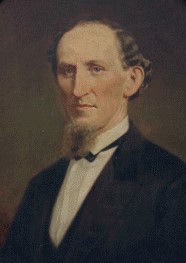
John George Baxter Jr. was the twentieth (1870–1872) and twenty-second (1879–1881) mayor of Louisville, Kentucky.
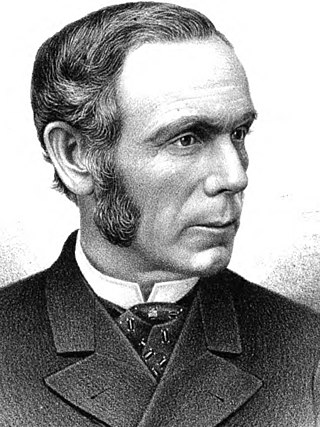
John George Warwick was an American politician who served briefly as a U.S. Representative from Ohio from 1891 until his death in 1892

Jabez Warner Fitch was an American politician who served as the 14th lieutenant governor of Ohio from 1878 to 1880 under Governor Richard M. Bishop. He was a Democrat from Cuyahoga County.

Worthy Stevens Streator was an American physician, railroad developer, industrialist and entrepreneur after whom the city of Streator, Illinois, is named. He was instrumental in the creation of the Atlantic and Great Western Railway in Ohio, was president of the Baltimore and Ohio Railroad (B&O), and financed the first large-scale coal mine operation in Northern Illinois in 1866. He served as an Ohio State Senator from 1870 to 1872, and was the first mayor of East Cleveland, Ohio. He was an influential in the development of many civic institutions in his home city of Cleveland, Ohio. He co-founded the Christian Standard magazine, he was an original endower of Case School of Applied Science and was a principal in the creation of the James A. Garfield Monument; the first true mausoleum created in the United States in honor of President James A. Garfield. He was a pallbearer at President Garfield's funeral in 1881.
Maurice B. Clark (1827–1901) was a partner in a produce business with John D. Rockefeller Sr., along with Clark's two brothers, James and Richard. Clark was from Malmesbury, England and moved to the United States in 1847. He studied with Rockefeller at Folsom's Commercial College in Ohio.
Nettie McKenzie Clapp was a member of the Ohio House of Representatives. In 1922 she became one of the first women elected to the Ohio General Assembly. Clapp was the first woman legislator to sponsor a bill in the Ohio General Assembly and the first woman to serve on the Republican National Convention Executive Committee in 1924.
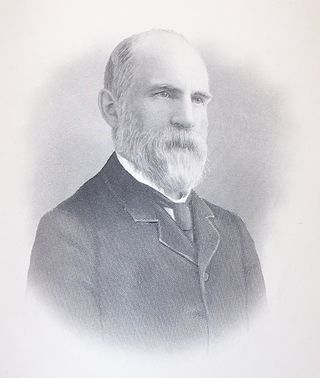
Anthony Howells was a businessman and Democratic politician from the U.S. state of Ohio who was Ohio State Treasurer 1878–1880 and a state senator.

St. Mary's on the Flats, originally known as the Church of Our Lady of the Lake, was the first Catholic church building in Cleveland, Ohio. The location where the church once stood can be found, in an 1881 atlas, at the south-east corner of Columbus Ave. and then Girard Ave. on the east bank of the Cuyahoga river in the flats. Irishtown Bend Archeological District, where many of the parishioners lived, lies to the west, across the Cuyahoga river in what was Ohio City. Ohio City was annexed by Cleveland on June 5, 1854.
The Valley Railway was a shortline railroad which operated between the city of Cleveland and small town of Zoarville in the state of Ohio in the United States. The railroad was founded in 1871, but the first segment of track did not open until 1880 and the line was not completed until 1884. The Baltimore and Ohio Railroad (B&O) obtained a controlling interest in the Valley Railway in 1890. The railroad went bankrupt in 1895, at which time it was reorganized as The Cleveland Terminal and Valley Railroad Company (CT&V). The B&O took over operation of the CT&V in 1909, and the company was merged with the B&O in 1915.

Charles Willard “Billy” Stage (1868–1946) was an American attorney, politician, professional baseball umpire and amateur track athlete. A native of Painesville, Ohio, Stage attended Western Reserve University, where he tied an amateur world record in the 100-yard dash. After briefly becoming a National League baseball umpire in 1894, he finished law school and became a private practice attorney. Stage served in the Ohio House of Representatives in 1902–03 before returning to law practice.

Hinman B. Hurlbut was an American industrialist. A native of New York, Hurlbut relocated to Cleveland, Ohio, in 1837 and started a career privately practicing law in Massillon, Ohio after being admitted to the bar in 1839. After a lucrative career as a lawyer, he found success as a business leader in Cleveland and came to own four national banks by 1863.

Harvey J. Eckley was an American politician and judge from Ohio. He served as a member of the Ohio Senate from 1892 to 1895.
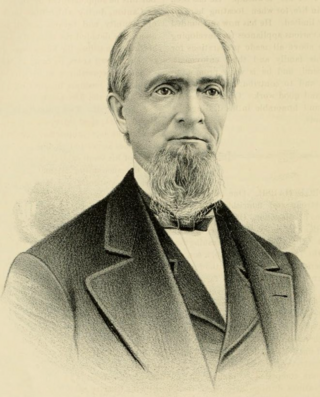
George Harsh was an American politician from Ohio. He served as a member of the Ohio House of Representatives, representing Stark County from 1846 to 1847 and served as a member of the Ohio Senate from 1860 to 1864.

Morris E. Gallup was an American politician from Ohio. He was a member of the Ohio House of Representatives, representing Cuyahoga County from 1866 to 1870.
Robert Barclay Dennis was an American politician from Ohio. He served as a member of the Ohio House of Representatives, representing Cuyahoga County from 1868 to 1872.
Amos E. Buss was an American politician from Ohio. He served as a member of the Ohio House of Representatives, representing Carroll County from 1860 to 1862.














